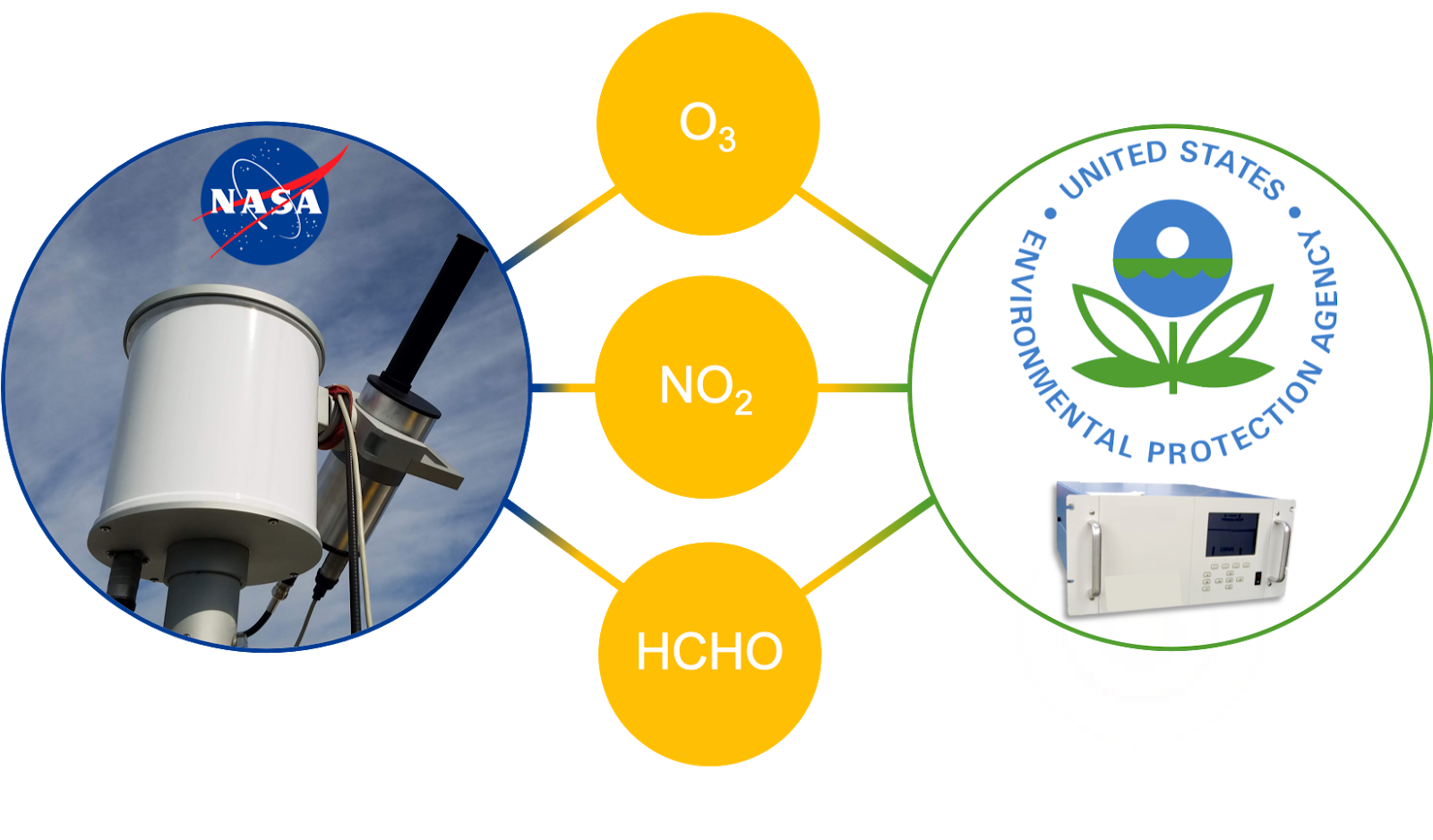Air Quality Monitoring
The Pandora spectrometer system is an instrument developed to measure vertical column densities of trace
gases in the atmosphere using lunar and sun/sky radiation in the UV-visible part of the spectrum.
Among currently experimental data products, such as SO2 and HCHO, validated and near-real-time O3 and NO2
total vertical column density data products are included.
In 1990, the
Clean Air Act Amendments required the promulgation of rules for the enhanced monitoring
of O3, NO2, and volatile organic compounds to obtain a more comprehensive and
representative data on O3 air pollution. Under this scope, the
Environmental Protection Agency (EPA)
program seeks to improve air quality in areas where the current standards are unacceptable and to
prevent deterioration in areas where the air quality is relatively free of contamination.
The integration
of Pandora spectrometer system into the EPA monitoring network, and specifically under the
Photochemical Assessment Monitoring Stations (PAMS) will focus on enhancing the existing
surface monitoring network to better understand emissions, chemistry, and the meteorological
dynamics in O3 non-attainment areas.
The last improvements in the Pandora spectrometer system brings as a benefit to EPA
monitoring network, a reliable instrument with a stable configuration to characterize atmospheric
columns with a focus on long-term O3, NO2, and HCHO data set.

